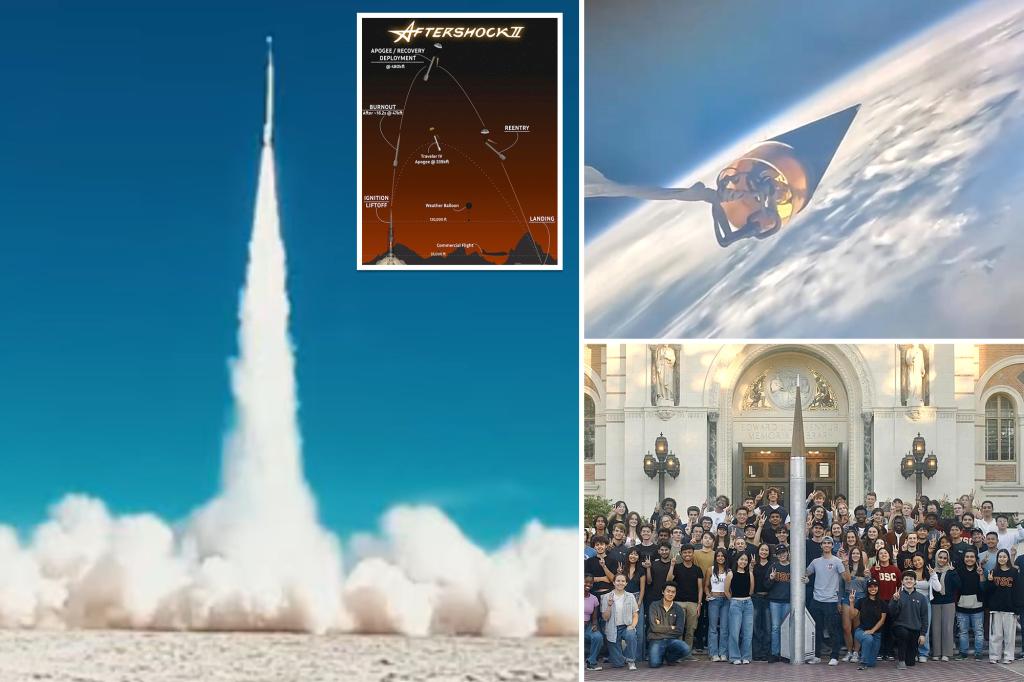Summarize this content to 2000 words in 6 paragraphs
Move over Musk.
A team of college kids at the University of Southern California broke the world record for the highest altitude reached by a rocket launched by amateurs — soaring a whopping 89 miles above the Earth.
Students with the USC Rocket Propulsion Laboratory club launched their self-built Aftershock II rocket from Nevada’s remote Black Rock Desert on Oct. 20 and shattered the previous record of 73 miles above the planet set 20 years ago.
They also blew through the record for the fastest speed reached by an amateur rocket at a blazing rate of one mile per second, an analysis of the rocket launch confirmed last week.
The mission came together from the collaboration of about 100 students from a variety of majors including Operations Lead and aerospace engineering major Jayna Rybner, according to the university’s publication.
“This was probably the coolest thing we had ever gotten the opportunity to do,” Rybner told the publication. “We’re just college students who have homework and dishes and groceries to do, and we just sent a rocket to space. We broke the world record and sent a rocket higher than any [amateur] ever has.”
The rocket mission was entirely run by students — mostly undergrads — and included not just the rocket construction and launch but also fundraising efforts, safety procedures and other external communications outside the scope of most college students’ educations.
“It’s like a mini-corporation,” said the chair of the Aerospace and Mechanical Engineering department, professor Paul David Ronney. “The students that have come out of that lab … have gone on to leadership positions in all of the major aerospace companies.”
The students even crafted their own computer systems and circuit boards from scratch to be able to track the rocket in real time, according to the university.
“It is important to know that all this technology is developed by our students themselves,” USC Viterbi School of Engineering Dean Yannis Yortsos told the university publication. “It’s all done in-house. Our students get advice from the faculty, but they develop everything on their own … We’re so proud of them because they can do this on their own. They learn how to transfer this knowledge from one year to another.”
The record-shattering rocket launch was only about 3.8 miles short of the altitude allowed for amateur rocketry, but the students are hoping to break new records in the club’s future.
“Some newer members of the club walked over, and we said to them, ‘Hey, this may have been the coolest thing we’ve ever done, but this is not going to be the coolest thing you guys have ever done,” Rybner said. “This freshman class [has] four more years to take what we did and do it even crazier, even better, even cheaper, even better to manufacture.”


